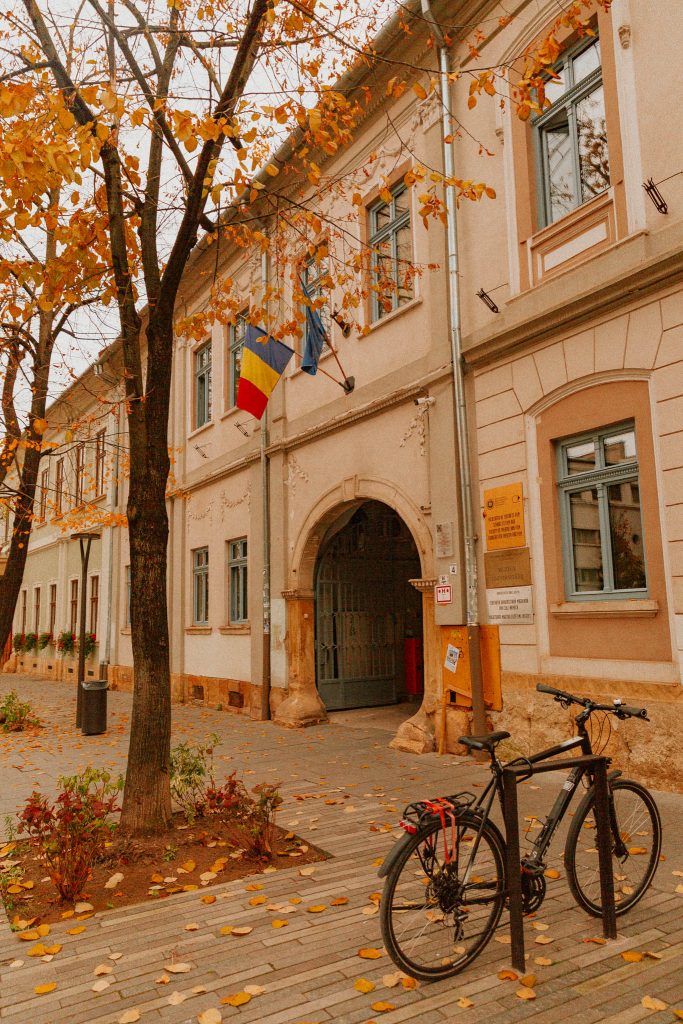This guide to visiting Transylvania in autumn contains affiliate links.
If you’re dreaming of misty forests, medieval towns and spine-tingling legends, then there’s no better time to visit Transylvania than autumn.
In October 2025, we took our own guided tour to Transylvania, Romania, and can confirm it was just as atmospheric and beautiful as we’d hoped.
As the leaves turned a crimson red, Romania’s most mysterious region came into its own. Whether we were wandering along the region’s many cobbled streets, or exploring Bran Castle at night, autumn provided the perfect backdrop to our adventure.
So, before you pack your bags, here’s everything you need to know about visiting Romania in autumn. Whether you want to know what the weather in Transylvania is like in fall, how to book your very own Dracula holiday, or even just what to do in Transylvania, this article has you covered.
Where is Transylvania, Romania?
Transylvania is a region located in central Romania, surrounded by the stunning Carpathian mountains and glacial lakes.
Filled with dense forests, fortified churches and ancient medieval towns, Transylvania spans an unexpectedly large area – bordering other Romanian regions including Moldavia, Wallachia and Crisana.
While most outsiders (myself included) know Transylvania best from Gothic novels and vampire legends, the region is a very real and culturally significant part of Romania (something we perhaps didn’t appreciate before our own visit).
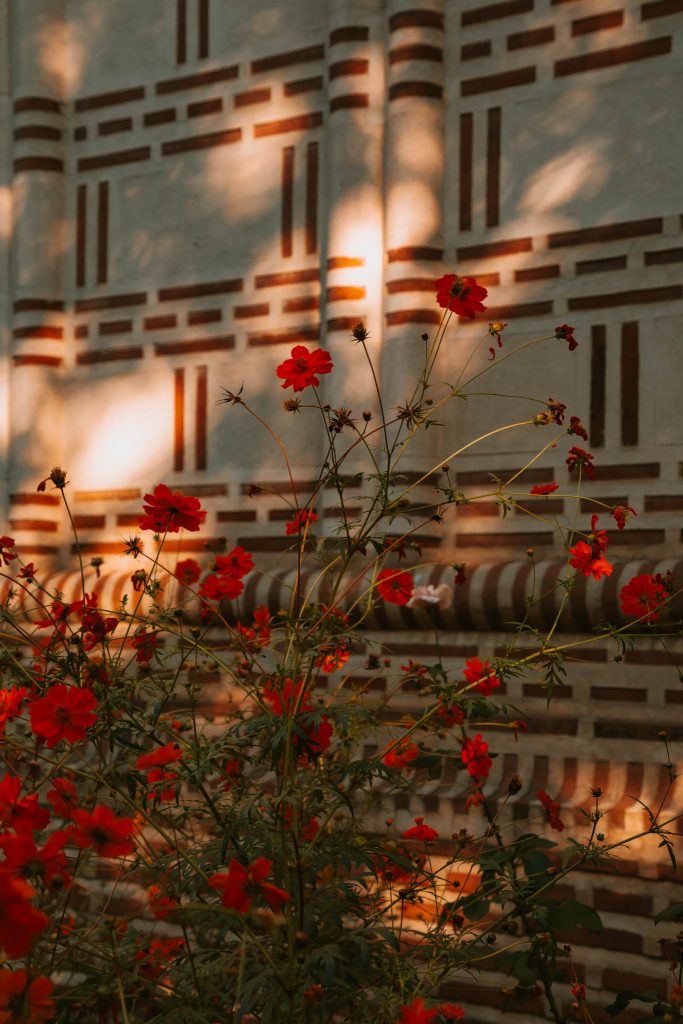
Historically, Transylvania was in fact part of the Kingdom of Hungary, before becoming a self-ruling principality under the Ottomans in the 16th century. It later became part of the Austro-Hungarian Empire and it was only in 1918 that it was officially united with Romania.
This layered past has definitely left its mark – today Transylvania is home to a mix of Romanian, Hungarian, German (Saxon) and Roma communities, each contributing to the region’s gorgeous architecture, cuisine, local legends and culture.
Despite the spooky myths that have made it so famous, Transylvania is known in Romania not just for its resident vampire, but for its ancient citadels, friendly people and unspoiled countryside. Its cities – most of which we visited during our own road trip through the region – including Cluj-Napoca, Viscri, Sighisoara and Brasov – are some of the most beautiful in the country.
During our visit, we soon learned that Transylvania is a region where old meets new – where 12th-century churches share the skyline with cute cafes, and Gothic castles rise above local markets. Whether you’re coming for the legends or the landscapes, knowing where Transylvania is – and what it stands for – adds to any journey through this gorgeous part of the country.
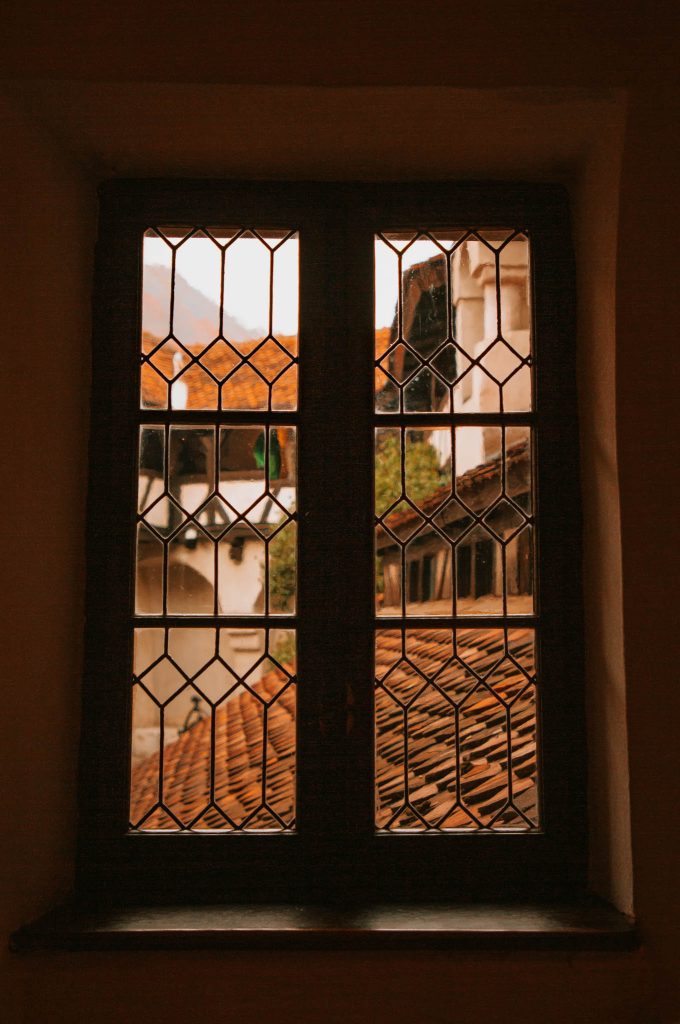
How to Get to Transylvania, Romania
Getting to Transylvania is very easy – with several options depending on where you’re coming from and how you want to travel.
As we were travelling to Romania from the UK, we just booked some cheap flights from London Luton airport to Bucharest, via Wizz Air (£45 each) – before heading on through Transylvania via mini bus.
By Air
The easiest way to reach Transylvania from abroad is by flying into one of its regional airports.
The most popular options are:
Cluj-Napoca International Airport (CLJ) – this is the largest airport in Transylvania, with connections to European cities like London, Vienna, Paris, and Frankfurt.
Sibiu International Airport (SBZ) – this is a much smaller, but well-connected airport, ideal if you’re planning to explore central Transylvania.
Alternatively, many travellers (like us!) choose to fly into Bucharest (OTP) and then take a train, or rent a car, for the scenic (albeit congested) journey north into Transylvania.
By Train
Romania’s railway system is pretty cheap, making train travel a comfortable way to reach Transylvania. Direct trains run regularly from Bucharest, Brasov, Sibiu and Cluj-Napoca, with connections also available from other European cities – including Budapest and Vienna.
Short journeys are around 10 euros, while longer trips – e.g. Bucharest to Cluj – are more in the region of 50 euros (still ridiculously cheap, compared to the UK’s prices).
Top tip: prices can be reduced through early booking (up to 25% off) and student discounts give (up to) a whopping 90% off.
By Car
For flexibility and the chance to explore Transylvania’s hidden gems, renting a car is (in my opinion) probably the best option.
For our own guided tour of Transylvania, we had a mini bus and a private driver (there was 16 of us), and it meant we could enjoy Transylvania in autumn to its fullest – think mountain views, dense forests and valleys filled with golden leaves.
By Bus or Coach
Budget-friendly coach services like FlixBus operate routes between most major cities in Romania. These are a good alternative to trains, but they can be very slow on the mountain routes – so perhaps not a great idea if you only have a few days in Transylvania.
However, if you’re looking for cheap travel in Romania, the bus is hard to beat: €2–7 for a trip to Brasov, or around €10 from Bucharest to Cluj‑Napoca. Just book early and expect a basic, comfortable journey.
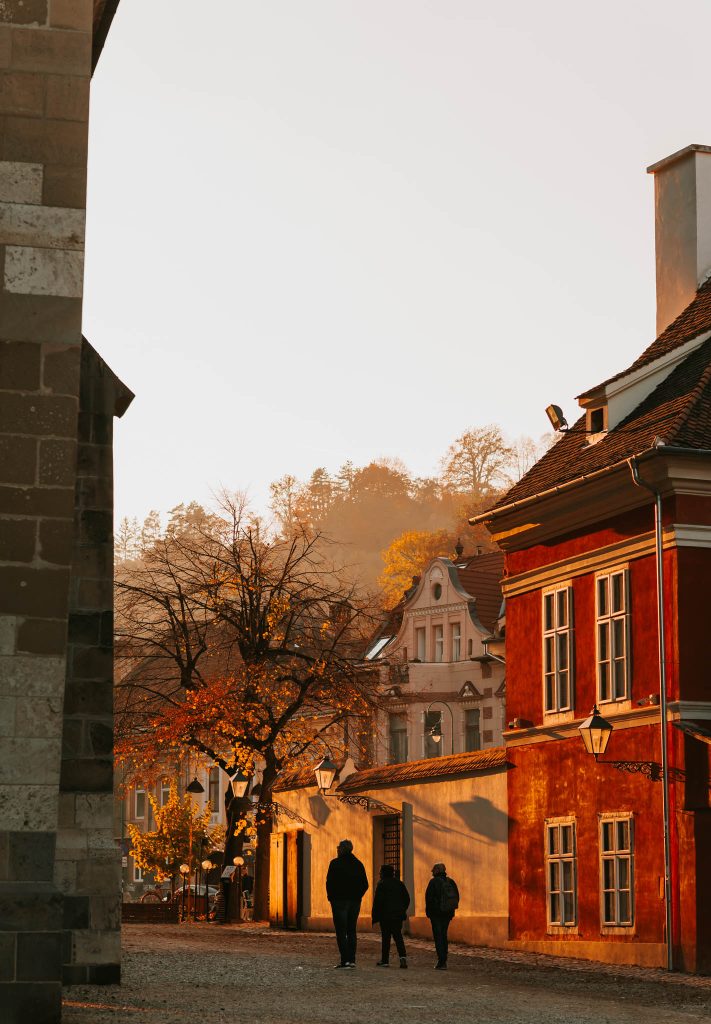
Is Romania Safe to Travel?
Absolutely: from our own experience, Romania – including Transylvania – is a very safe destination for travellers (and solo female travellers).
Whether we were exploring the Soviet streets of Bucharest, wandering the cobbled lanes of Brasov, or exploring Dracula’s castle, we found Romania super welcoming, peaceful and easy to navigate.
Transylvania itself was surprisingly sleepy and agricultural, and far removed from the bright lights of other Eastern European cities. As a group of females, we never felt uncomfortable or at risk – and had a really relaxing week long trip.

Personal Safety
Romania actually ranks as one of the safest countries in Eastern Europe, with low rates of violent crime.
Every local we met were helpful and generally lovely – especially in smaller towns and rural villages in Transylvania (like Viscri). Having spoken to others, we learnt that solo travellers, including women, also felt safe, even at night – particularly in tourist-friendly areas like Sibiu, Cluj-Napoca and Sighisoara.

Scams & Petty Theft
Petty theft can happen, especially in busy train stations or crowded tourist spots, so keep an eye on your belongings, just as you would in any major European destination. Pickpocketing is uncommon, but more likely in Bucharest or Cluj-Napoca.
Roads & Transport
Driving in Romania is mostly safe, although we did find some of the rural roads narrow, windy and a little bumpy. If you’re planning a road trip through Transylvania, definitely be prepared for unexpected animal crossings (wayward sheep and cows), and even horse and carts, which flew past us a few times.
Nature & Outdoor Safety
If you’re hiking or heading into the mountains in Transylvania, make sure you check the weather, stay on marked trails and inform someone of your route.
Bears do live in the wild in Romania – and sometimes wander into cities such as Brasov once the sun sets. Make sure you swot up on just what to do if you come across one (we were told to make ourselves big and clap, loudly!)
Everything You Need to Know About Visiting Transylvania in Autumn (or Fall)
1. Why Visit Transylvania in Autumn?
Let’s be honest – for many travellers, autumn in Transylvania immediately brings one thing to mind: Halloween. This is, after all, the land of Dracula, vampires and things that go bump in the night.
As such, and each October, Transylvania lights up with Dracula-themed parties, ghost tours and night-time visits to Bran Castle – culminating in feasts and parties that go into the early hours.
However, and what surprised us most during our tour of Transylvania, was just how deeply rooted this season was in (authentic) Romanian culture and tradition. Beyond the commercialised gory stories was in fact a landscape rich with folklore, harvest customs and atmospheric community festivals.
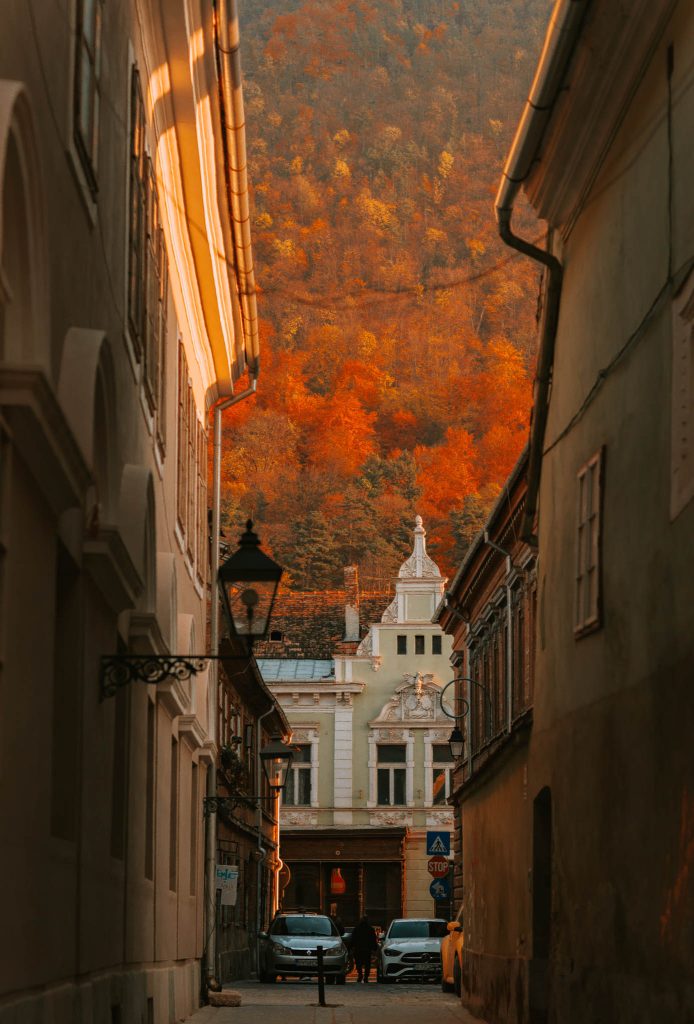
Traditional Autumn Festivals in Transylvania
In rural areas like Bran, we were delighted to find that locals still celebrate the harvest season with events like the Răvășitul Oilor (the Sheep Fair). This is an age-old festival marking the return of shepherds and their flocks from the mountains, celebrated with dancing, singing and plenty of autumnal produce.
Meanwhile, in cities like Sibiu, Brasov and Sighisoara, you’ll find lovely autumn fairs with folk dancers in embroidered costumes, live cimbalom music, gorgeous handmade crafts and plenty of plum brandy.
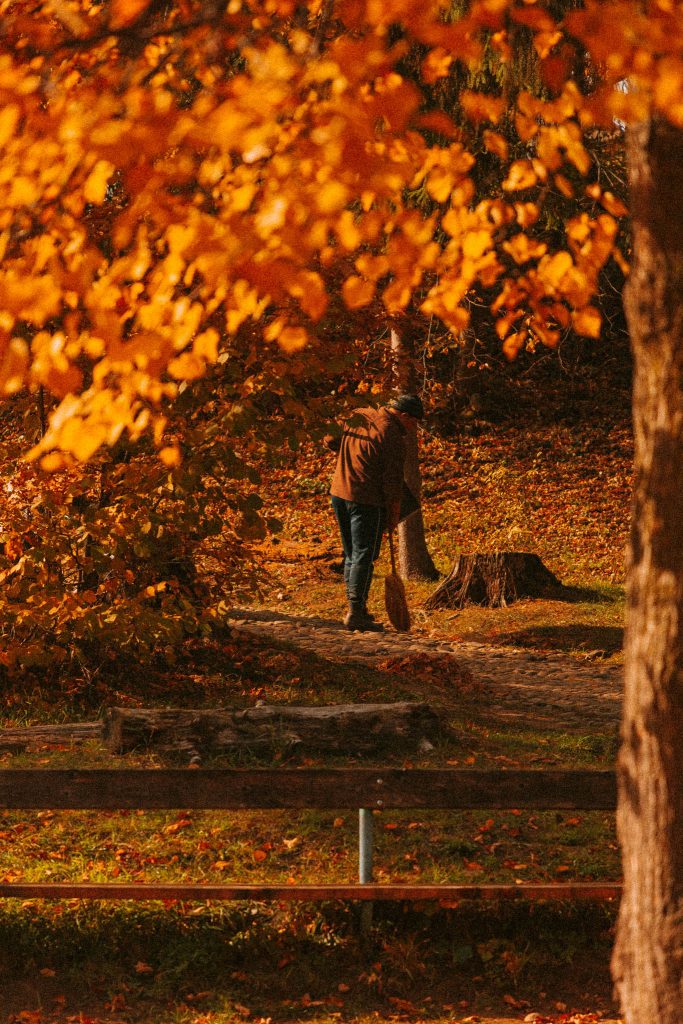
The Fire of Sumedru & The Feast of Saint Dumitru
One of the most striking autumn rituals in Romania is the Feast of Saint Dumitru, celebrated on October 26th.
Saint Dumitru, Romania’s patron saint of shepherds, is celebrated for closing the autumn season and signalling the start of winter preparations – as the morning frosts begin to appear and the Carpathian mountains get their first dusting of snow.
On the night of October 2th, many rural communities light towering bonfires, known as the Fire of Sumedru. This tradition has deep spiritual meaning and is believed to help protect villagers from evil spirits, bless the autumn harvest and bring good fortune.
When we visited on October 25th, we watched from our minibus as bonfires burnt across the rolling hillsides – a haunting and beautiful sight. As the smell of woodsmoke hung in the air, our guide explained how children and young adults jump over the flames of these fires, while villagers gather to share apples, walnuts, bagels.
It was so special to hear about this – and to see the enormous fires themselves – and far more meaningful than any Halloween party.
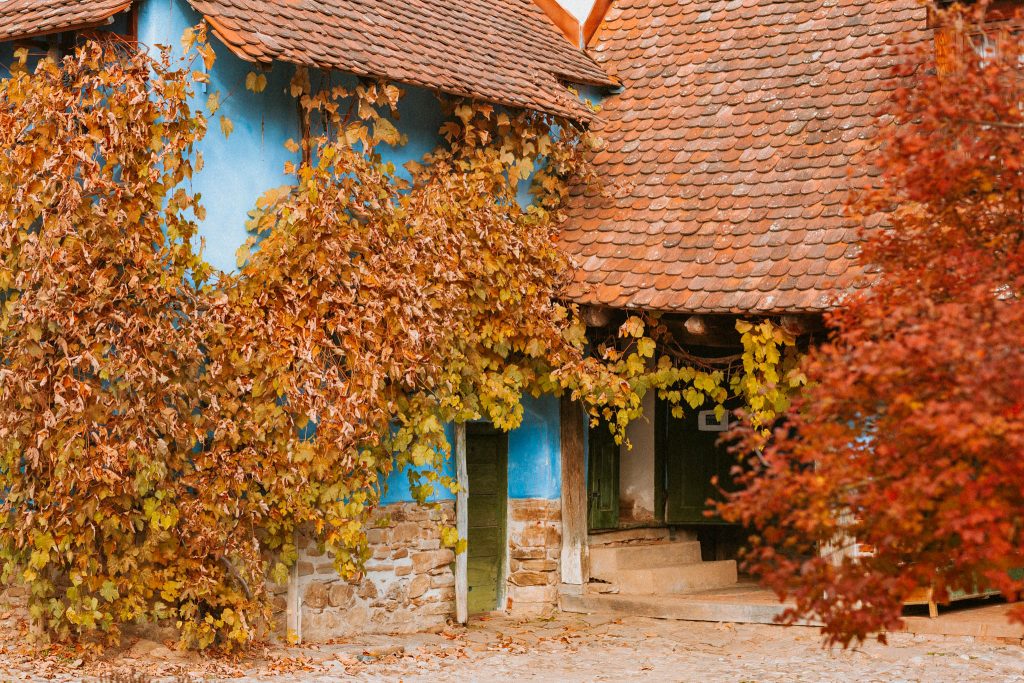
Candlelit Cemeteries and Strigoi Stories
In more remote areas of Transylvania, All Saints’ Day and All Souls’ Day (late October to early November) are still observed with candlelit vigils in hilltop cemeteries. Locals tell tales of the ‘strigoi’ – restless spirits from Romanian folklore – continuing a tradition of storytelling that is at the heart of Transylvanian culture.
While the Dracula-themed events are undeniably fun, what truly makes visiting Transylvania in October so special are therefore these folkloric traditions.
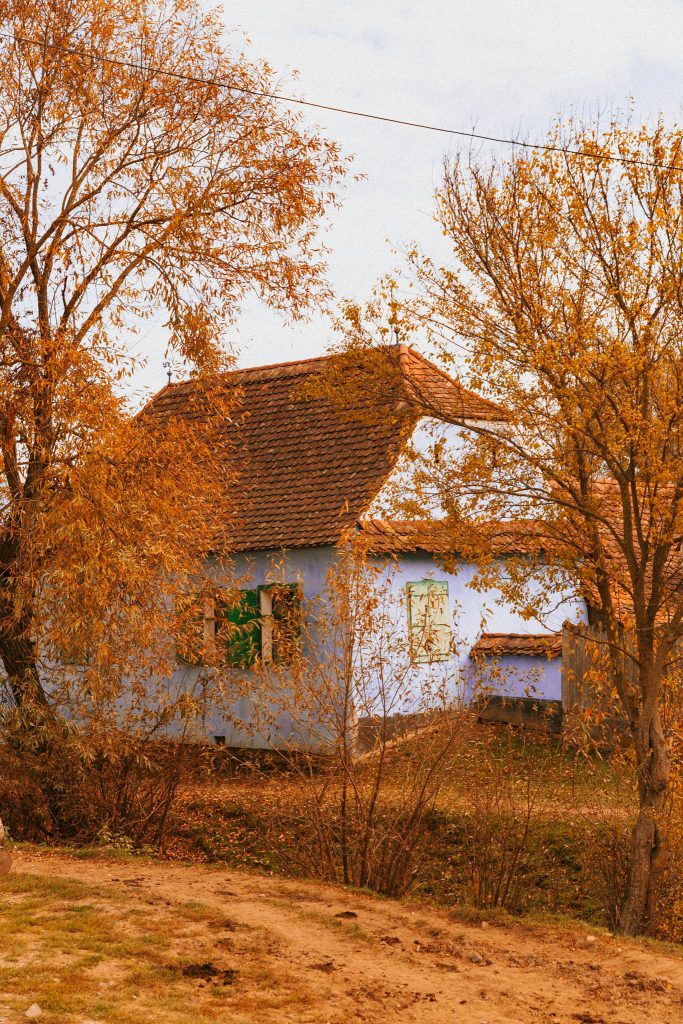
2. The Weather in Transylvania in Autumn
So, what is the weather like in Transylvania in autumn – or, specifically, October?
We visited from October 25th – November 1st, and were (for obvious reasons) expecting chilly days and frosty mornings. As such, we packed accordingly – hiking boots, jumpers, jeans and scarves.
However, when we touched down in Bucharest – we realised we had got things horribly wrong. Romania in late October was unseasonably warm, around 21 to 22 degrees. As such, everything we packed was way too hot and we spent most of our trip uncomfortably warm.
We were told that it was an unseasonable heat, however, and the temperatures would usually be around 12 – 17 degrees; definitely jumper weather.
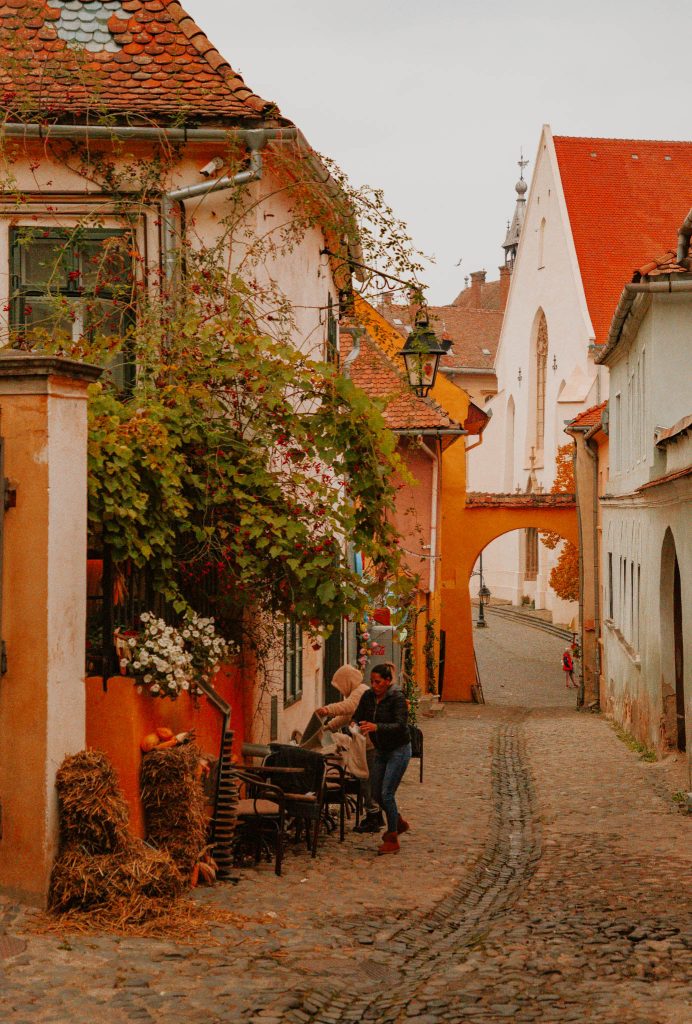
Once we got into the countryside and Transylvania proper, things cooled slightly and the landscape was spectacular. We also only had one day of slight drizzle, which was much better than I had been expecting.
Average daytime temperatures:
12°C – 17°C (54°F – 63°F) in early October
6°C – 12°C (43°F – 54°F) by late October
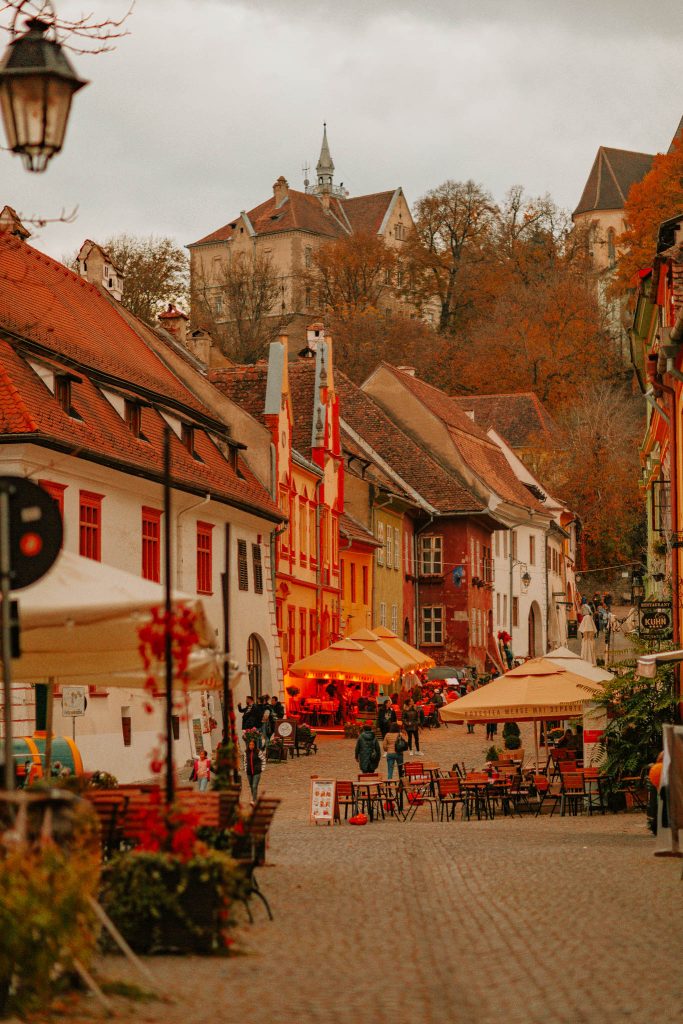
3. Top Attractions in Transylvania in Autumn
So, you decide to visit Romana in autumn – what next? Where is best to see in Transylvania in autumn or fall?
Firstly, our road trip itinerary that we took last autumn is a great starting place – covering some of the most beautiful destinations in the region that you have to visit.
These include visiting beautiful Brasov – for an unforgettable view of the forests in all their autumnal glory – Sighisoara, underrated Viscri and onwards to Cluj-Napoca.
Castles in Transylvania
Transylvania’s castles are among the region’s biggest draws – especially in autumn, when the forests and gentle mist make for beautiful scenery. Here are some of the most beautiful castles in Transylvania to visit during fall.
Bran Castle (Dracula’s Castle)
Found in the village of Bran (close to Brasov), this iconic castle is often (though inaccurately) linked to Vlad the Impaler, the apparent inspiration for Count Dracula.
This 14th-century fortress is one of Romania’s most iconic sites. In autumn, it’s particularly atmospheric; especially during Halloween. It’s therefore well worth staying overnight in Bran, just to get a photo of its jagged silhouette against a moon-lit sky.
Is Bran Castle Really Worth Visiting? My Honest Opinion

Corvin Castle (Castelul Corvinilor)
One of the largest castles in Europe, Corvin Castle feels like something from a dark fairy tale. Less crowded than Bran, it offers a more authentic (and eerie) atmosphere – complete with a very impressive drawbridge.
Found in Hunedoara, western Transylvania, this castle also has dungeons – perfect for any spooky trip.
Peles Castle
Although not a medieval castle, Peles is a masterpiece of 19th-century Neo-Renaissance design – and absolutely beautiful. Surrounded by forests that turn gold in autumn, it’s easily one of Romania’s most photogenic castles.
Bethlen Castle (Castelul Bethlen)
Found close to Sighisoara, this castle is definitely less touristy and perfect for those seeking off-the-beaten-path charm. Unlike the other castles in the region, this castle is almost manor house like and surrounded by rolling farmland.
Banffy Castle (Castelul Bánffy)
A castle with a complicated past – once opulent, later neglected, and now being restored – Banffy is fascinating to explore and often hosts events like Electric Castle Festival. It’s also super close to Cluj-Napoca, where we finished our guided tour of Transylvania.
It’s therefore a great spot to visit, if you have a few hours spare at the end of your spooky adventure.
4. Halloween Parties In Transylvania
So, you’re visiting Romania in October and want to know one thing: where are the best Halloween parties in Transylvania?
Here’s a guide to the best events that bring Dracula’s world to life.
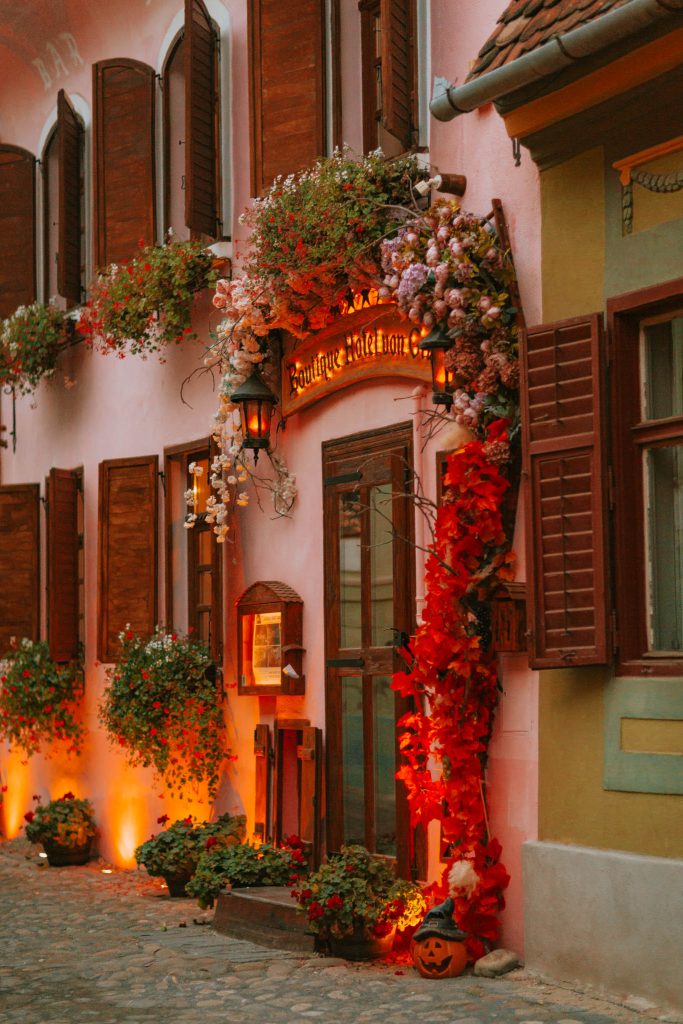
Bran Castle: The Ultimate Halloween Experience
Known worldwide as ‘Dracula’s Castle’, Bran Castle hosts some of the region’s most popular Halloween parties.
When night falls, the fortress takes on an amazingly creepy atmosphere, with candlelit tours that lead you through narrow corridors and rooms. Offsetting this, however, is the very real party taking place – with themed music, costume contests and theatrical performances (think fire eaters and the like).
Many visitors also opt for special dining experiences inside the castle, where traditional Transylvanian dishes are served amid spooky decor.
Pro tip: Book your tickets early, as these events are extremely popular and often sell out fast.
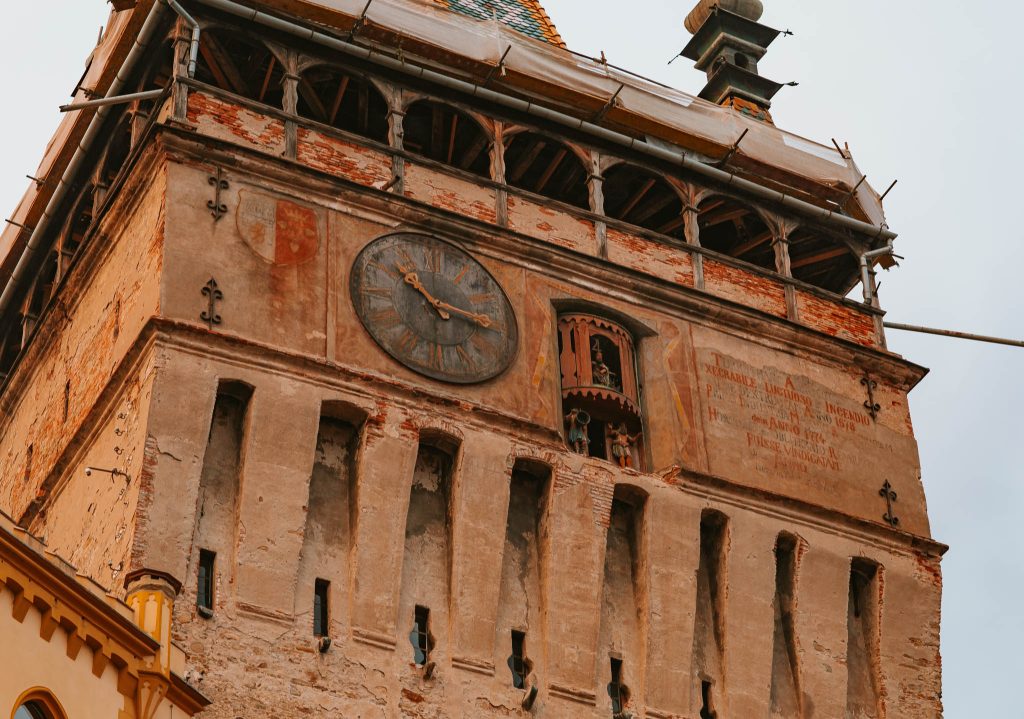
Sighisoara Citadel: A Medieval Vampire Ball
Step back in time in Sighisoara – the birthplace of Vlad the Impaler. Held within the medieval citadel’s cobblestone streets and fortified walls, the celebrations here have a more authentic feel – featuring live music, dance performances, dramatic reenactments of vampire legends – and, oddly – ballet.
Guests are welcomed with traditional plum brandy and can enjoy a little feast of traditional Transylvanian dishes. The event often features contests for the best vampire costume, along with a slightly disturbingly named ‘Ritual of Killing of the Living Dead’.
Dracula-Themed Multi-Day Tours
For travellers wanting a more immersive Halloween adventure, several tour companies offer multi-day packages that combine the best of Transylvania’s spooky celebrations. These tours typically include visits to Bran Castle’s Halloween gala, the Sighisoara Vampire Ball and other legendary sites.
Along with the parties, these tours often incorporate guided visits to historic towns, museums, and even the chance to experience traditional rituals or local festivals.
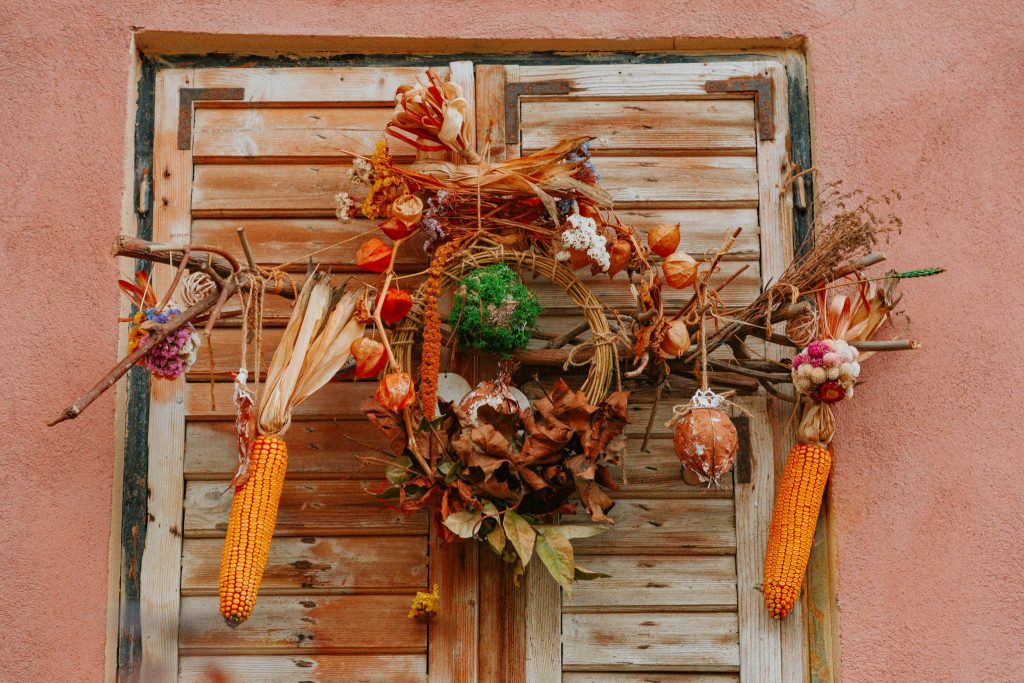
5. Best Autumn Tours to Transylvania, Romania
There are plenty of guided tours to Transylvania – including ones specifically curated for Halloween.
Intrepid Travel
Our own tour was through Intrepid Travel – who run a fantastic Halloween tour through the region’s most beautiful cities and villages. It also included an Intrepid Halloween Party, hosted in Cluj-Napoca on Halloween night.
This is an 8 day trip and costs around £1,073 per person – including transport and accomodation throughout.
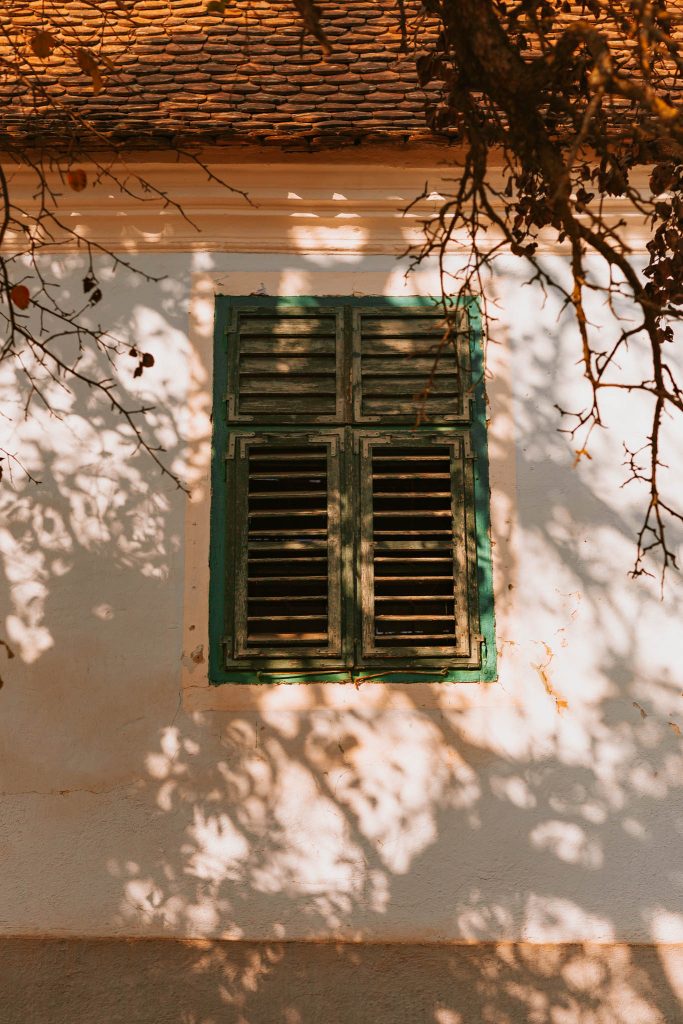
Collett’s – Walking Holiday in the Southern Carpathians
If being outside and hiking Romania is more your thing, then definitely take a look at this tour offered by Collett’s – the mountain holiday specialists.
The tour lasts 7 nights and costs on average £1,550 per person. Highlights of the trip include beautiful autumnal hikes through Piatra Craiului and Bucegi National Park. You’ll also visit Bran Castle, Sibiu and have all your accommodation and entrance fees covered.
Adventure Transylvania – Castles and Countryside
The specialists in guided tours through Transylvania, Romania, Adventure Transylvania offer some great autumnal and Halloween packages.
One tour I’ve been tempted by is their 6 day Castles Tour – which visits Dracula’s Castle, Brasov, Sibiu and Corbin Castle – costing around £730 per person.
Original Travel – Luxury Romania Tours
We have been a big fan of Original Travel for a long time.
Their luxury guided tours around Romania and Transylvania look wonderful – and I am now contemplating whether I should do it all over again, but this time with Original.
If you’re looking to go all out spooky, then their Creepy Castles, Vampires and Bears tour looks incredible – and is very much a family tour of Transylvania. Alongside all the usual spots, there is a chance to visit a beekeeper who makes honey for King Charles (who owns a house in Viscri), horse riding and a picnic, and even a bear hunt through the dark, shadowy forests.
Their tours, given this level of detail, are much more expensive than others and this one comes in at between £3,200 – £5,000 per person.
However, I am now somewhat obsessed with all their Romanian tours, including their Bison Safari and Rewilding Adventure, which looks such a peaceful way to get to know rural Romania.
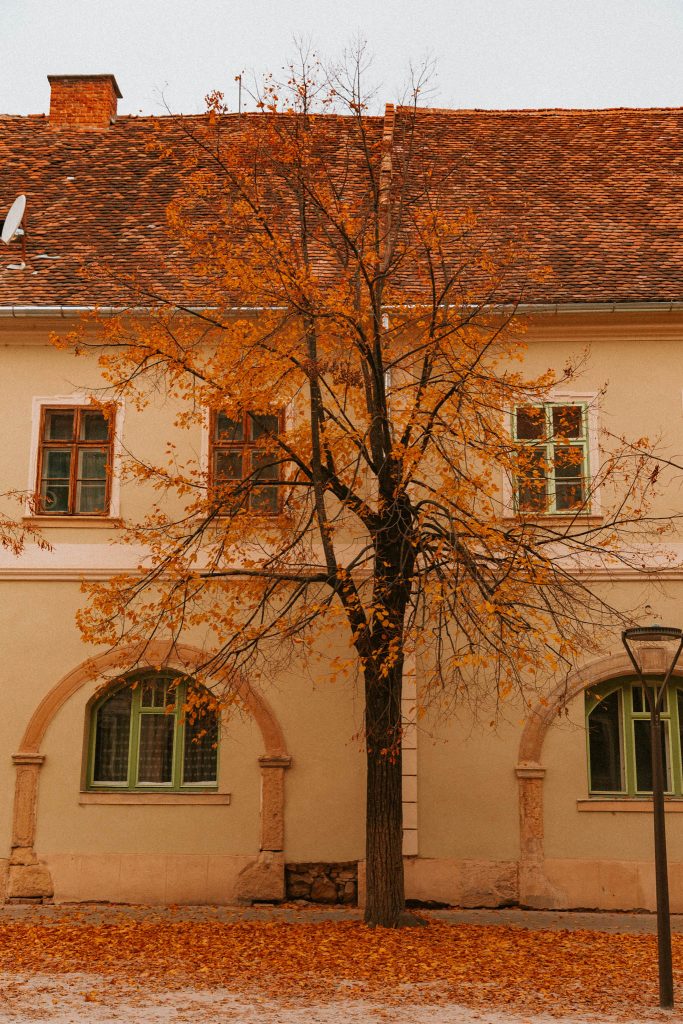
6. What to Eat and Drink in Autumn in Romania
Autumn in Transylvania isn’t just about those beautiful crimson leaves and moonlit nights – it’s also a season that delivers some fantastic food.
Visit this region during fall and you’ll find Brasov’s markets overflowing with pumpkins, plums and forest mushrooms (Transylvanians love mushrooms!) Definitely try a bowl of ‘ciorba de legume’ at La Ceaun in Brasov, where they cook with whatever the season brings. We had the most amazing lunch here – and loved watching the waiters deliver the most enormous meat platters to other diners.
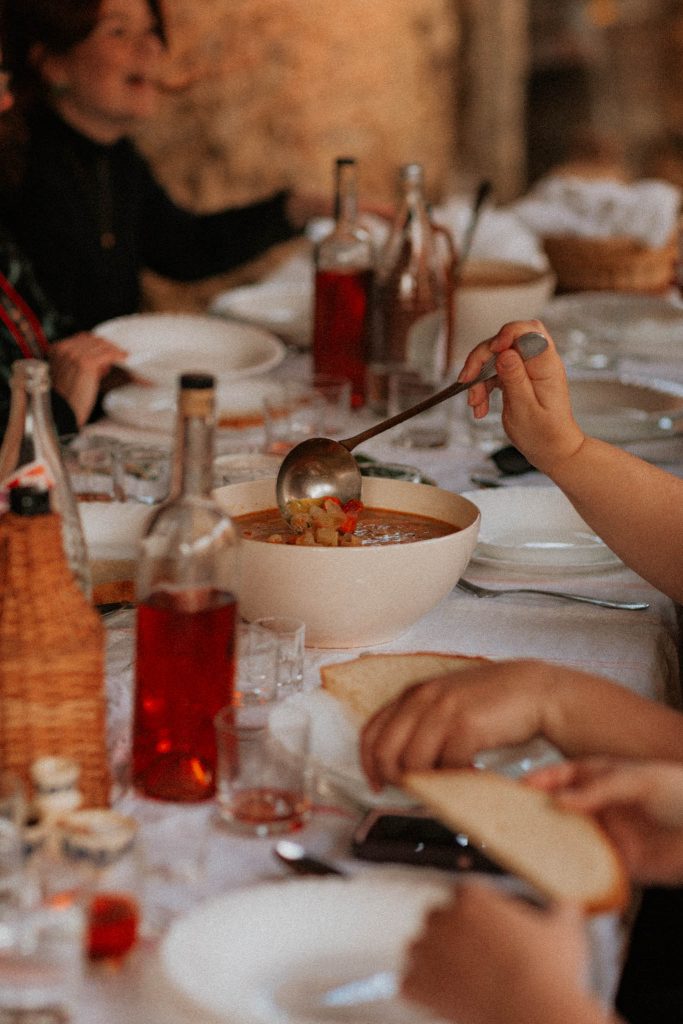
In Sibiu, try to visit when the Autumn Harvest Festival is in full swing (usually late September), when walnut-stuffed pastries and sheep’s cheese pies fill local markets and cafes. Also, give their tripe soup a go – it might not sound delicious, but it’s incredibly tasty.
During this time, villages across Transylvania prepare the region’s famous smoky plum brandy (tuica) to celebrate the fruit harvest. When we visited Viscri, we were offered it almost continuously – and it was, shall we say, very ‘warming’.
If you are a bit of a wine connoisseur, then try and arrange a detour to the Tarnave wine region near Jidvei, where autumn is grape-harvest season. Many wineries offer tastings during this time – pairing them with autumn pastries and cheese.
Eating in Transylvania in autumn is therefore less about restaurant finesse and more about earthy, soulful flavours tied to the rhythms of the land.
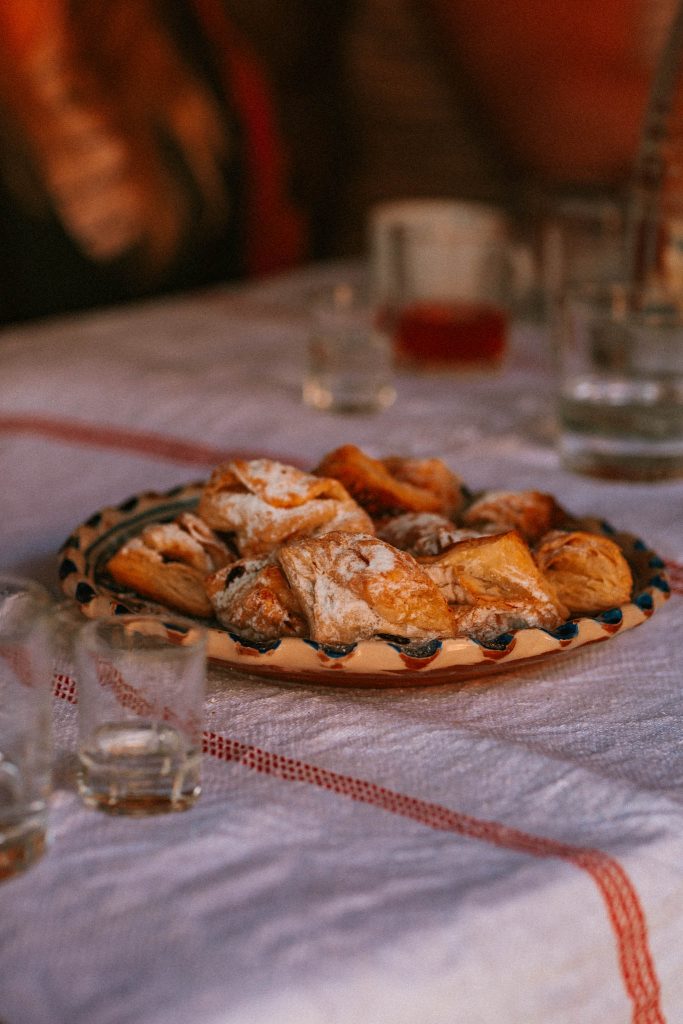
8. Is Autumn Peak Season in Transylvania?
If you are researching when are the best months to visit Transylvania – you might think that autumn will – hands down – be the most popular time to visit.
As we’ve discovered, Transylvania in fall is nothing short of picturesque. The rolling hills, green forests and historic towns are draped in shades of gold, amber and crimson – and the autumn mists add the perfect guise of spookiness.
But does this mean it’s peak season?
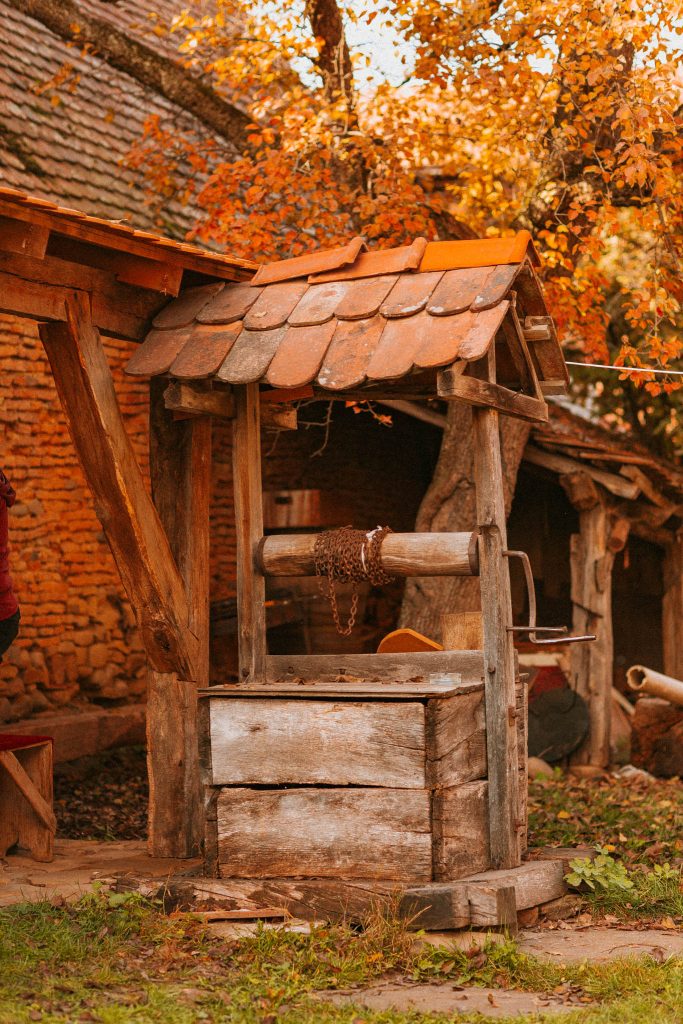
Not quite.
Summer is in fact when Transylvania welcomes its most visitors – specifically July and August (like anywhere in Europe, I guess). This is a time of many outdoor festivals, alongside a great chance for people to hike, swim in the mountain lakes and enjoy balmy evenings walking the area’s historical citadels.
Autumn in Transylvania offers a more balanced experience. September and October are generally considered shoulder season, meaning tourist numbers are generally lower.
However, given the beauty of this season, the celebrations around harvest season and – of course – its proximity to Halloween, while autumn isn’t Transylvania’s peak tourist season, it’s definitely one of the best times to visit.
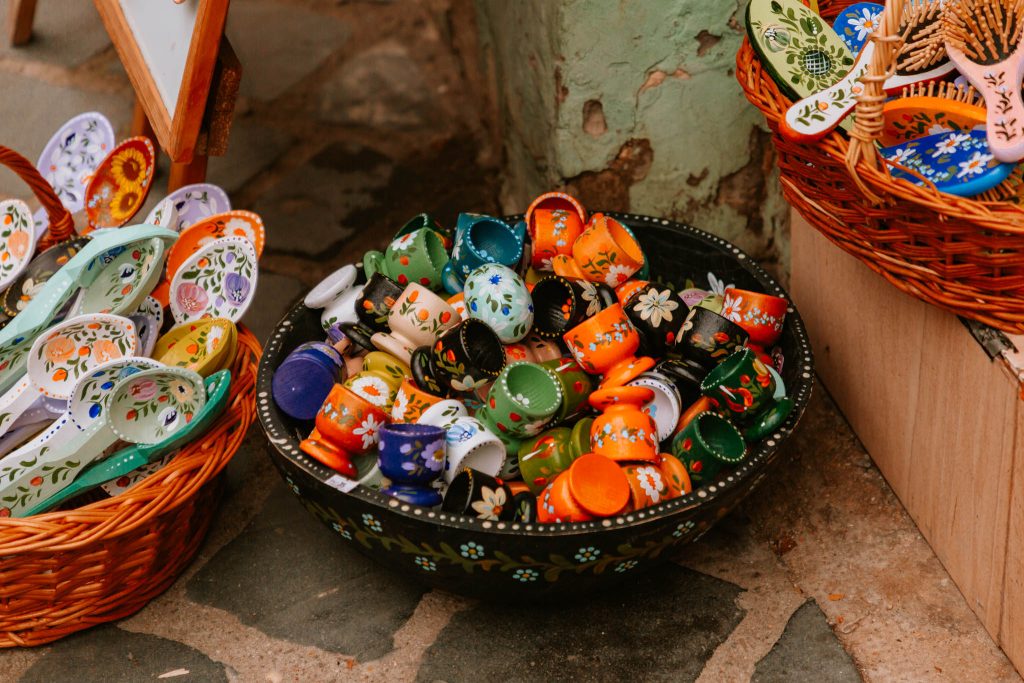
Autumn in Transylvania: The Perfect Time to Visit
Our week-long tour in Tranysvlania was one that provided incredible scenery, fresh food and plenty of tales of medieval legends and local folklore.
From exploring fortified churches as golden leaves fell, to wandering bustling markets overflowing with pumpkins, I’m so glad we decided to visit Romania in fall.
The crisp air, vibrant colours and warm hospitality of the locals made the experience unforgettable. And for anyone seeking a mix of history, culture and natural beauty – without the crowds of summer – autumn in Transylvania is truly unbeatable.
